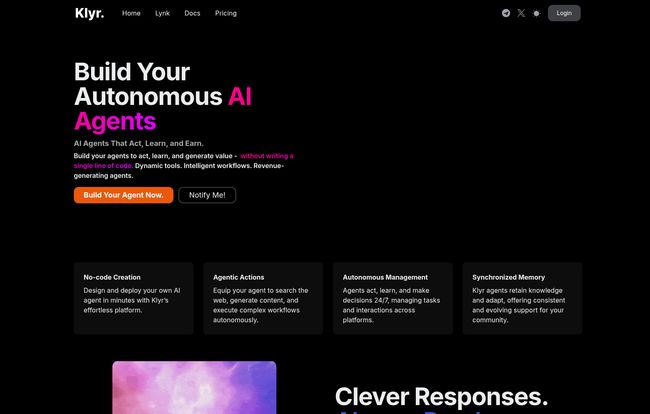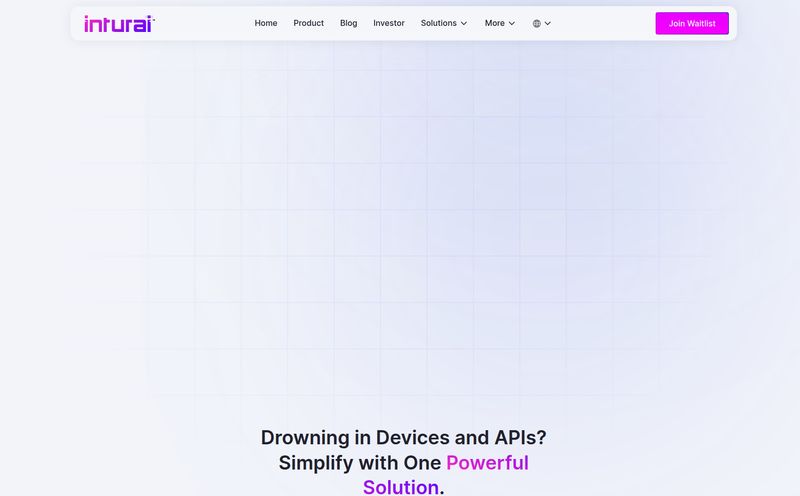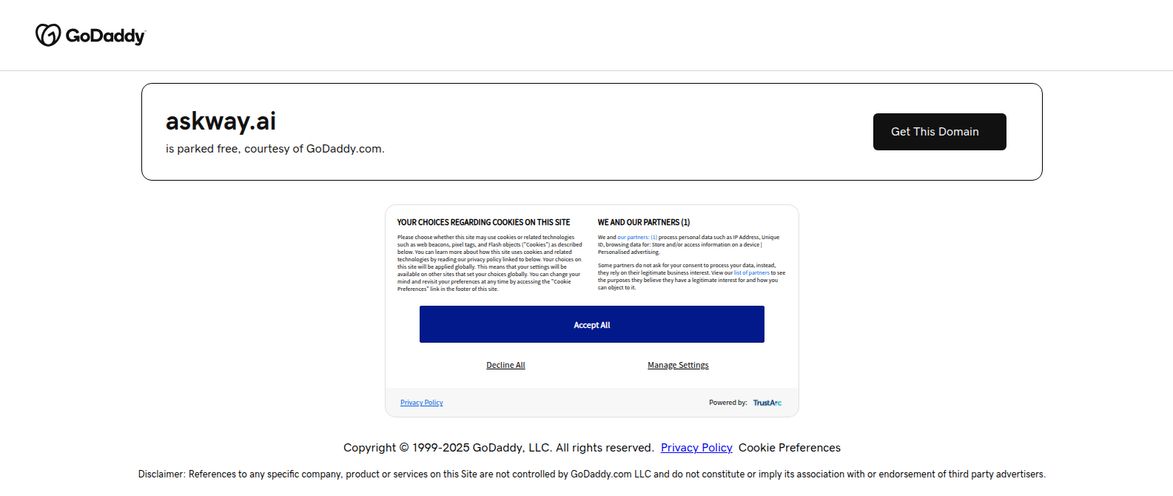If you’ve ever managed an online community, you know the grind. It's part cat-herding, part cheerleading, and part 24/7 customer support. You're constantly answering the same questions, stamping out fires, and trying to keep the vibes positive. It’s rewarding work, but man, it can be a slog. I’ve personally seen brilliant community managers burn out trying to be everywhere at once. We've got chatbots and automation tools, sure, but most of them feel... well, robotic. They follow scripts. They don't really get it.
Then something called Klyr floated across my screen. The headline wasn't about chatbots. It was about building “Autonomous AI Agents.” That got my attention. It’s a subtle but important distinction. We’re not talking about a simple if-this-then-that bot. We’re talking about an AI that can supposedly act, learn, and even earn. It’s a big promise. But in this AI-crazed world we live in now, big promises are the new normal.
So, I did what any self-respecting tech nerd and SEO would do: I went down the rabbit hole. And what I found is… intriguing, to say the least.
So, What Exactly is Klyr Supposed to Be?
At its core, Klyr is a no-code platform for building AI assistants designed specifically for community management. Think of it less like a pre-programmed moderation bot and more like a tool to create your own team of hyper-competent digital interns. These aren't just responders; they're 'agents'. The idea is that they can handle up to 70% of your routine tasks, freeing you up to focus on the human-to-human connection that actually grows a community.
They’re leaning heavily on some pretty advanced tech buzzwords like “deep learning” and “synchronized memory,” but the pitch is simple: make community interactions smarter, more automated, and more insightful. No coding degree required.
The Features That Actually Matter
A feature list is just a feature list until you figure out what it actually does for you. I’ve waded through enough marketing fluff to know the difference. Here’s my breakdown of what Klyr is offering and why it might be a big deal.
Building Your Own AI Without Writing Code
This is the big one. The no-code aspect is huge because it puts some serious power into the hands of non-technical folks (like most community managers, and, lets be honest, a lot of marketers too). You're not just picking from a dropdown of pre-set commands. The platform implies you can create unique agents with specific roles. Maybe one agent is the 'Onboarder' who greets new members and gives them a personalized tour. Another could be the 'Librarian,' capable of searching the web or your internal docs to answer complex questions. The potential for customization here is what sets it apart from a generic bot like MEE6, for example.
This “Agentic Actions” Thing is a Game Changer
Okay, so your bot can say “hello.” Cool. But can it execute a multi-step workflow? Klyr’s “Agentic Actions” feature suggests it can. This means an agent could, in theory, see a feature request in Discord, create a task for it in a project management tool, and then notify the team in Slack. That’s not just responding; that's working. It’s a move toward the kind of autonomous assistants we’ve been promised for years, a far cry from the glorified auto-responders we currently use.
Deep Learning and a Shared Brain
Here’s where it gets a little more technical but super interesting. Klyr claims to use a deep learning approach. In plain English, this means the AI isn’t just looking for keywords. It’s trying to understand context, nuance, and sentiment. It can tell the difference between sarcastic grumbling and a genuine, frustrated user. This leads to more appropriate, human-like responses.
And then there's the 'Synchronized Memory'. This is brilliant, if it works as advertised. It means all your agents share a collective knowledge base. You tell one agent something important, and they all know it instantly. No more re-training multiple bots or updating scripts in ten different places. It’s a unified brain for your entire community moderation team, which is incredibly efficient.

Visit Klyr
Multi-Platform Support: Your Community Isn't in One Place
Let's be real, your community probably sprawls across multiple platforms. You’ve got the main hub on Discord, a support channel on Telegram, and maybe an internal team on Slack. Klyr seems to get this. They list support for Discord, Slack, Telegram, and even WhatsApp. Having a single, intelligent system that can manage and learn from interactions across all these platforms is a massive win for brand consistency and operational sanity. It creates a single source of truth for your community’s pulse.
Let’s Talk Turkey: The Klyr Pricing Tiers
Alright, the all-important question: how much does this magic cost? This is where things get a bit hazy. As of right now, Klyr is in a 'whitelist' phase, and the main pricing tiers are marked as “Coming Soon.” This tells me it’s an early-stage product, and they’re looking for early adopters to help them iron out the kinks. Here’s what we do know from their pricing table:
| Tier | Best For | Key Features |
|---|---|---|
| STARTER (Free Forever) | Testing the waters, very small communities, personal projects. | 1 Agent, Basic AI, Short-Term Memory. Lacks analytics, deep learning, and sentiment analysis. |
| PRO (Coming Soon) | Growing communities, small businesses. | 3 Agents, Long-Term Memory, Basic Analytics, Deep Learning & Sentiments. |
| PREMIUM (Coming Soon) | Established communities, larger businesses. | 10+ Agents, Ultra Long-Term Memory, Advanced everything. |
| ENTREPRISE (Coming Soon) | Large-scale operations, custom needs. | Unlimited everything, custom branding (white-label), personalized onboarding. |
The free tier is essentially a demo. It gives you a taste but holds back the most powerful features like Deep Learning and Sentiment Analysis. The real power is clearly in the paid tiers. The use of a “credits” system is also common for AI tools, where more complex actions consume more credits. The lack of actual dollar amounts is a bit of a bummer for anyone trying to budget, but it’s standard practice for a product in a whitelist phase.
The Potential Red Flags and Reality Checks
I wouldn’t be doing my job if I didn’t approach this with a healthy dose of SEO-driven skepticism. First off, a lot of its most exciting features are “Available soon.” You’re not buying a finished product; you’re signing up for a promise. That can be exciting, but it’s also a risk. Delays happen. Features get cut.
Second, the effectiveness of the entire platform hinges on the quality of their deep learning models. If the models are mediocre, the responses will be mediocre. Without being able to fully test the advanced tiers, it's hard to verify their claims. Finally, the vague pricing might scare off larger organizations that need predictable costs.
My Verdict: Is Klyr Worth Getting on the Whitelist For?
Despite the caveats, I’m genuinely excited about what Klyr represents. This feels like the logical next step beyond basic automation. Community management is a deeply human discipline, and the goal of AI shouldn’t be to replace the human but to augment them—to handle the noise so the manager can focus on the signal.
In my opinion, yes, it's absolutely worth getting on the whitelist. Especially if you're a community manager feeling the burn, a startup looking to scale your user engagement, or a Web3 project needing robust, intelligent moderation.
The free tier offers a no-risk way to see what the basic interface feels like. Getting on the list gives you a front-row seat to what could be a major evolution in how we build and maintain online spaces. It might not be perfect out of the gate, but the direction it's heading is the right one.
Frequently Asked Questions about Klyr
What is Klyr in simple terms?
Klyr is a platform that lets you build your own AI assistants (called agents) to help manage your online communities on platforms like Discord and Slack. It's designed to automate tasks, understand conversations, and provide insights without you needing to know how to code.
Is Klyr actually free?
Yes, Klyr offers a “Starter” plan that is free forever. It's limited in features but is a good way to try out the platform. The more advanced features, like deep learning and long-term memory, are part of paid plans that are listed as “Coming Soon.”
What platforms does Klyr work with?
Currently, Klyr is designed to integrate with Discord, Slack, Telegram, and WhatsApp, allowing you to manage your community across different channels with a single system.
What's the difference between a Klyr agent and a regular chatbot?
A regular chatbot typically follows a rigid script. A Klyr agent is designed to be more autonomous. It uses deep learning to understand context and sentiment, can perform complex actions (like searching the web), and has a shared memory to learn from interactions over time, making it more flexible and intelligent.
Do I need to be a developer to use Klyr?
No. One of Klyr's main selling points is that it is a no-code platform. The entire system is built to be accessible to community managers, marketers, and business owners without a technical background.
What does 'Whitelist' mean for Klyr?
The 'whitelist' means the product is in an early access or beta phase. By joining, you're signing up to be one of the first people to get access to the platform, often before it's released to the general public. It's a way for the company to gather feedback from a smaller group of initial users.
Final Thoughts
The world of AI is moving at a breakneck pace, and tools like Klyr are a perfect example of that. We're shifting from simple automation to true augmentation. While it’s still early days for Klyr, the vision is powerful. If they can deliver on even half of their promises, they could seriously change the daily life of anyone responsible for a thriving online community. I’ll be keeping a close eye on this one, and I suggest you do too.



